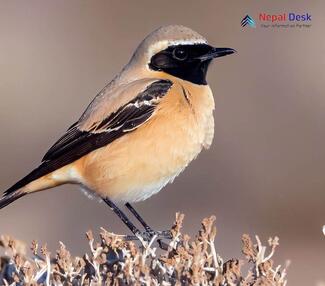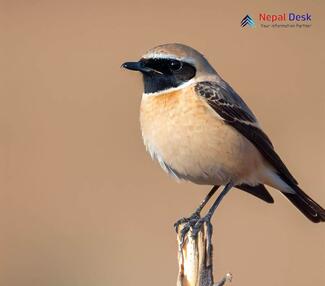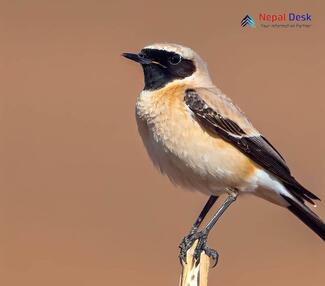The Desert Wheatear (Oenanthe deserti) is a captivating, yet elusive bird species that few people get the chance to witness in their natural habitat. It’s an uncommon sight, even in the bird-watching community, and Nepal is one of the few places where you can spot these extraordinary creatures. It was formerly classed as a member of the thrush family Turdidae, but is now more generally considered to be an Old World flycatcher (Muscicapidae). In this article, we will discuss the Desert Wheatear's unique characteristics, preferred habitat, and its presence in Nepal.
A Fascinating Species with Intriguing Characteristics
The Desert Wheatear is a small passerine bird belonging to the Wheatear genus Oenanthe. It has a striking appearance with its sandy brown plumage on the upper parts and a bright white tail adorned with a dark terminal band. Males exhibit a characteristic black head and white throat, while females have more subdued colors on their heads.
The song of the Desert Wheatear is a delightful series of high-pitched notes that have been described as 'resembling a chirping canary.' Despite their vocal abilities, these birds are mainly solitary creatures that keep to themselves except during breeding season.
Adapted to Harsh Environments
As their name suggests, Desert Wheatears inhabit arid regions such as deserts, semi-deserts, and sandy plains. They can be found across North Africa, the Arabian Peninsula, and Asia primarily in countries like Egypt, Libya, Iran - and of course – Nepal. What makes them so remarkable is their ability to thrive in such harsh environments where water and vegetation are scarce.
These birds possess incredible adaptability when it comes to finding food. The diet of a Desert Wheatear typically consists of insects like beetles, ants, and termites; but when resources are scanty they may also consume seeds or even human scraps.
An Uncommon Birdwatching Experience in Nepal
Nepal offers a unique opportunity to catch a glimpse of the Desert Wheatear. Although it is not as abundant compared to other bird species, its presence provides birdwatching enthusiasts with a thrilling experience. The country’s diverse ecosystem, ranging from lowland forests to high-altitude deserts, makes it an ideal habitat for a wide variety of avian life.
The best time to spot the Desert Wheatear in Nepal is during the winter season (November-February), when they migrate from their breeding grounds in Central Asia. Popular areas to find them include the Koshi Tappu Wildlife Reserve and Chitwan National Park.
In conclusion, witnessing the Desert Wheatear in its natural habitat is a rare and exciting opportunity for birdwatchers and nature enthusiasts alike. When visiting Nepal, don’t miss out on this exceptional chance to observe these beautiful birds and immerse yourself in the nation’s astounding biodiversity.




